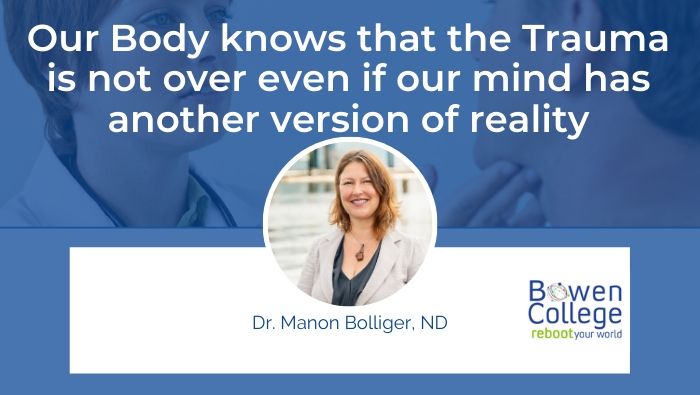The therapeutic goal is to have our ANS experience that the trauma is over by experiencing a state of safety and calm for repair, restoration and rest.
There are a myriad of symptoms that the body adopts in chronic pain syndromes such as anxiety, learned helplessness, tension… When a more recent event triggers any of the myriad of expressions of trauma, the pain-trauma loop is retriggered even if the stimulus now is benign. This is an example of how what was initially a self-preserving instinct-based reaction to trauma to a potentially life-threatening situation is now causing us to re-engage the neurochemical processes of protection over and over again when they are no longer justified or needed. Rather than using only a psychologically-based therapy treatment, its effects are amplified by allowing patients to have a felt sense of peace and safety. Just as we create pain loops, we also have the power to undo and release these patterns in and through our body.
What is evident from clinical experience is that to treat the area affected by the impact without treating the great interpreter-our brain-as well as the whole person- the experiencers- is likely to prolong the recovery and potentially lead the patient down the journey of chronic pain.
If the trauma has not left their body, those who take the route of physiotherapy and attempt to rehabilitate their muscles will typically get 20% to 30% improvement without ever feeling free from the accident.
The motor vehicle accident patients I have treated typically improve quickly for several reasons. First, BowenFirst™ therapy involves the body’s relaxation response and helps auto-regulate the ANS. This is of paramount importance since we can only heal when we are in parasympathetic mode.
Additionally, specific protocols address the shock stored in the body, with the patient cognizant of this information. For example, when the accident “took their breath away” or they were “aghast” or “winded,” restoring proper breathing patterns and full use of their lungs and proper tension of their diaphragm is paramount prior to addressing their whiplash or low back pain.









